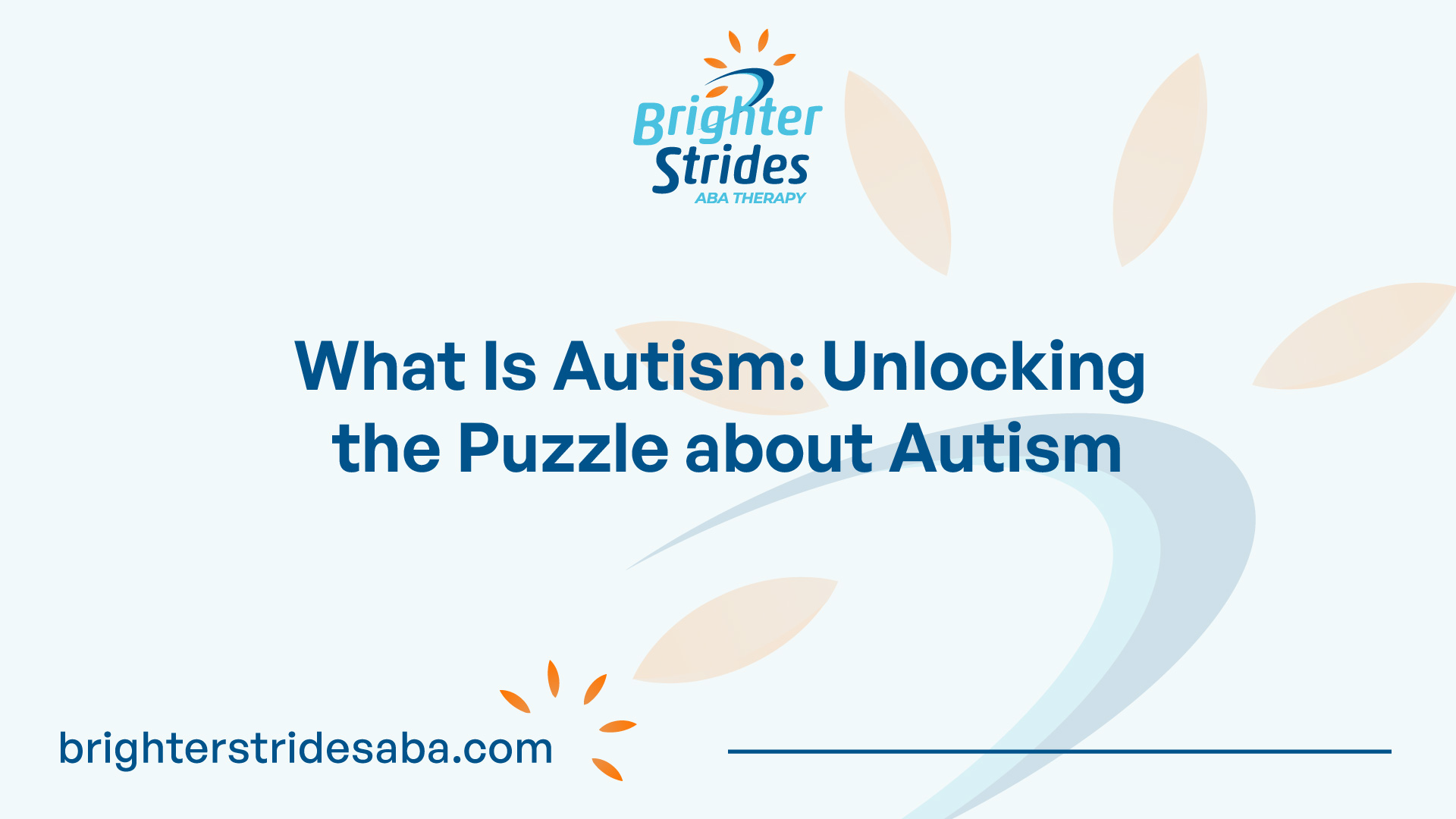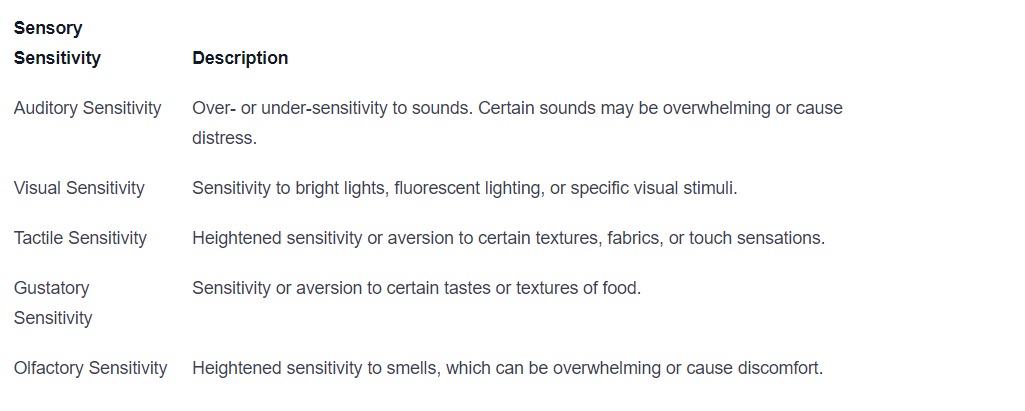Understanding Autism
Autism Spectrum Disorder (ASD) is a complex neurodevelopmental disorder that affects how a person perceives and interacts with the world around them. This section will delve into the definition of Autism Spectrum Disorder and highlight its prevalence within the population.

Defining Autism Spectrum Disorder
Autism Spectrum Disorder is a term used to describe a range of developmental conditions characterized by differences in social communication, repetitive behaviors, and sensory sensitivities. The term “spectrum” reflects the wide variation in symptoms, strengths, and challenges that individuals with autism may experience. It is important to note that autism is a lifelong condition, and while symptoms may change over time, individuals with autism continue to experience the world differently than their neurotypical counterparts.
The Prevalence of Autism
Autism is more common than one might think. According to the Centers for Disease Control and Prevention (CDC), approximately 1 in 54 children in the United States is diagnosed with autism spectrum disorder. This prevalence rate has been increasing over the years, partly due to improved awareness, diagnostics, and changes in diagnostic criteria.
Understanding the prevalence of autism is essential for fostering a more inclusive society and ensuring that individuals with autism receive the support and resources they need. By recognizing the high prevalence of autism, we can work towards creating a more empathetic and understanding environment for individuals on the spectrum.
To gain a deeper understanding of autism, it is important to explore the signs, symptoms, diagnosis, causes, and treatment options associated with this complex neurological condition. By doing so, we can promote greater acceptance and inclusion while supporting individuals with autism in leading fulfilling lives.
Signs and Symptoms
Autism Spectrum Disorder (ASD) is characterized by a range of signs and symptoms that affect an individual’s social communication, behavior, and sensory processing. Understanding these signs and symptoms is crucial in identifying and supporting individuals with autism. Here are three key areas of challenges commonly associated with autism: social communication challenges, repetitive behaviors and restricted interests, and sensory sensitivities.
Social Communication Challenges
One of the hallmark features of autism is difficulty with social communication. Individuals with autism may struggle with verbal and nonverbal communication, making it challenging to initiate and maintain social interactions. Some common social communication challenges include:
- Difficulty understanding and using nonverbal cues, such as facial expressions, gestures, and body language.
- Delayed or atypical development of speech and language skills.
- Trouble initiating and participating in conversations, often having difficulty with turn-taking and topic maintenance.
- Literal interpretation of language, leading to difficulties understanding sarcasm, humor, or abstract language.
Understanding and addressing these challenges is crucial for individuals with autism to navigate social interactions effectively.
Repetitive Behaviors and Restricted Interests
Repetitive behaviors and restricted interests are another characteristic feature of autism. These behaviors can manifest in various ways and may include:
- Repetitive body movements, such as hand flapping, rocking, or spinning.
- Insistence on sameness and adherence to strict routines. Changes in routines or unexpected events may cause distress.
- Highly focused interests in specific topics or objects, often to the exclusion of other activities.
- Unusual preoccupations with parts of objects or specific patterns.
These repetitive behaviors and restricted interests can serve as a source of comfort and self-regulation for individuals with autism. However, they can also interfere with daily functioning and social interactions.
Sensory Sensitivities
Sensory sensitivities are commonly observed in individuals with autism. Sensory processing difficulties can affect how individuals perceive and respond to sensory stimuli, such as sights, sounds, smells, tastes, and textures. Some common sensory sensitivities associated with autism include:

Understanding and accommodating these sensory sensitivities can help create a more comfortable and supportive environment for individuals with autism.
By recognizing and understanding these signs and symptoms associated with autism, we can promote better understanding, acceptance, and support for individuals on the autism spectrum.
Diagnosis and Evaluation
When it comes to autism, diagnosis and evaluation play a crucial role in understanding and supporting individuals on the autism spectrum. This section will explore the diagnostic criteria, the importance of early diagnosis, and the assessment and evaluation process.
Diagnostic Criteria
The diagnosis of autism spectrum disorder (ASD) is based on specific criteria outlined in the Diagnostic and Statistical Manual of Mental Disorders (DSM-5). These criteria help clinicians assess and determine if an individual meets the criteria for an ASD diagnosis. Some of the key diagnostic criteria include:
- Persistent deficits in social communication and social interaction across multiple contexts.
- Restricted, repetitive patterns of behavior, interests, or activities.
- Symptoms must be present from early childhood.
- Symptoms must cause significant impairment in daily functioning.
It’s important to note that the diagnosis of autism is made by qualified healthcare professionals, such as psychologists, psychiatrists, or developmental pediatricians, through a comprehensive evaluation process.
The Importance of Early Diagnosis
Early diagnosis of autism is crucial as it allows for early intervention and support. Identifying autism at an early age enables individuals and their families to access appropriate resources, therapies, and interventions that can promote optimal development and improve outcomes.
Research has shown that early intervention can lead to significant improvements in language skills, social interactions, and adaptive behaviors. It can also help individuals with autism develop strategies to manage challenges and maximize their potential.
Assessment and Evaluation Process
The assessment and evaluation process for autism involves various professionals, including psychologists, speech-language pathologists, occupational therapists, and developmental specialists. The process typically includes:
- Developmental History: Gathering information about the individual’s developmental milestones, behaviors, and challenges from parents, caregivers, and teachers.
- Observation and Evaluation: Professionals observe the individual in various settings, assess their social interactions, communication abilities, and behaviors.
- Standardized Tests: Utilizing standardized assessments to evaluate cognitive abilities, language skills, adaptive behaviors, and social functioning.
- Medical Evaluation: Ruling out any underlying medical conditions that may present with similar symptoms to autism.
- Collaboration and Analysis: Professionals collaborate to analyze the assessment results, considering the diagnostic criteria and determining if the individual meets the criteria for an ASD diagnosis.
It’s important to remember that the assessment process may vary depending on the individual’s age, developmental stage, and specific needs. A comprehensive evaluation helps to provide a clear understanding of an individual’s strengths, challenges, and support requirements.
By following the diagnostic criteria, understanding the importance of early diagnosis, and undergoing a thorough assessment and evaluation process, individuals with autism can receive the necessary support and interventions to thrive and reach their full potential.
Causes and Risk Factors
Understanding the causes and risk factors associated with autism spectrum disorder (ASD) is an ongoing area of research. While the exact cause of autism remains unknown, studies suggest a complex interplay of genetic and environmental factors, as well as the role of brain development.
Genetic Factors
Genetic factors play a significant role in the development of autism. Research indicates that certain gene mutations and variations can increase the risk of developing ASD. These genetic changes can occur spontaneously or be inherited from parents. While specific genes associated with autism have been identified, they only account for a small percentage of cases. It is believed that a combination of multiple genes, along with other factors, contributes to the development of autism.
Environmental Factors
While genetics may predispose individuals to autism, environmental factors can also influence its development. Various environmental factors have been studied, including prenatal and early life exposures. Factors such as advanced parental age, maternal infections during pregnancy, exposure to certain chemicals or medications, and complications during birth have been associated with an increased risk of autism. It is important to note that these factors are not direct causes of autism but may contribute to the overall risk.
The Role of Brain Development
The development of the brain during pregnancy and early childhood is crucial for typical neurological functioning. In individuals with autism, there may be differences in the structure and functioning of the brain. Studies have shown that certain areas of the brain involved in communication, social interactions, and sensory processing may be affected in individuals with ASD. These differences in brain development can impact how individuals with autism perceive and interact with the world around them.
Understanding the causes and risk factors of autism is essential for early identification and intervention. It is important to note that autism is a complex neurodevelopmental condition, and each individual’s experience with autism may differ. Ongoing research aims to further unravel the puzzle of autism to improve diagnosis, treatment, and support for individuals on the autism spectrum.
Treatment and Support
While there is no cure for autism, there are various treatment and support options available to help individuals with autism spectrum disorder (ASD) thrive and reach their full potential. These approaches typically involve a combination of multidisciplinary approaches, therapeutic interventions, and supportive services.
Multidisciplinary Approaches
Multidisciplinary Approaches involve a team of professionals from different fields working together to create a comprehensive treatment plan tailored to the individual’s needs. This team may include:
- Psychiatrists and Psychologists: These professionals can provide assessments, diagnose autism, and offer counseling or therapy to address emotional and behavioral challenges.
- Speech-language Therapists: They focus on improving communication skills, including speech, language, and social communication.
- Occupational Therapists: These therapists help individuals develop and improve skills necessary for daily activities, such as self-care, fine motor skills, and sensory integration.
- Special Education Teachers: They provide educational support, accommodations, and interventions to promote learning and development.
- Applied Behavior Analysis (ABA) Therapists: ABA is a widely used approach that focuses on shaping and reinforcing positive behaviors and reducing challenging behaviors.
Therapeutic Interventions
Therapeutic Interventions play a significant role in the treatment of autism. These interventions aim to enhance communication, social skills, and overall functioning. Some commonly used therapeutic interventions include:
- Social Skills Training: This involves teaching individuals with autism how to navigate social interactions, interpret nonverbal cues, and develop meaningful relationships.
- Cognitive-Behavioral Therapy (CBT): CBT helps individuals manage anxiety, cope with challenging situations, and develop problem-solving skills.
- Speech and Language Therapy: This therapy focuses on improving communication skills, such as speech articulation, language comprehension, and social communication.
- Occupational Therapy: Occupational therapists work on improving sensory processing, motor skills, and daily living skills to enhance independence and quality of life.
Supportive Services
Supportive Services are essential in providing ongoing assistance and enhancing the overall well-being of individuals with autism and their families. These services may include:
- Early Intervention Programs: Early identification and intervention are crucial for optimal outcomes. Early intervention programs provide specialized services to children with autism aged 0-3 years, focusing on developmental milestones and addressing specific challenges.
- Special Education Programs: These programs offer tailored educational plans, accommodations, and support services to help individuals with autism access education and reach their educational goals.
- Support Groups and Community Organizations: Joining support groups or community organizations can provide individuals with autism and their families a sense of community, resources, and a platform to share experiences and challenges.
- Vocational Training and Employment Support: As individuals with autism transition into adulthood, vocational training programs and employment support services can help them develop job skills, find suitable employment, and thrive in the workplace.
By utilizing a combination of these treatment and support options, individuals with autism can receive the necessary care, interventions, and services to improve their overall well-being and lead fulfilling lives. It’s important to remember that every person with autism is unique, and treatment plans should be tailored to address their specific strengths, challenges, and goals.
Living with Autism
Living with autism can present unique challenges, but with the right support and advocacy, individuals with autism can thrive and lead fulfilling lives. In this section, we will explore three important aspects of living with autism: Advocacy and Self-advocacy, Building a Support Network, and Promoting Inclusion and Acceptance.
Advocacy and Self-Advocacy
Advocacy plays a crucial role in ensuring that the rights and needs of individuals with autism are recognized and respected. Advocacy can take many forms, from raising awareness about autism to influencing policies that promote inclusivity and accessibility. Advocacy efforts can be carried out by individuals with autism themselves, as well as their families, friends, and support organizations.
Self-advocacy is empowering individuals with autism to speak up for themselves, express their needs, and make decisions that impact their lives. It involves developing self-awareness, understanding one’s strengths and challenges, and learning effective communication strategies. Self-advocacy skills enable individuals with autism to actively participate in their own care, education, and decision-making processes.
Building a Support Network
A strong support network is crucial for individuals with autism and their families. This network can include family members, friends, educators, therapists, and support groups.
Building a support network provides emotional support, access to resources, and opportunities for social connections.
Support groups specifically tailored for individuals with autism and their families can offer a safe space to share experiences, exchange advice, and learn from others facing similar challenges. These groups can provide valuable insights, guidance, and a sense of belonging.
Promoting Inclusion and Acceptance
Promoting inclusion and Acceptance is essential for creating a society that embraces and values individuals with autism. It involves creating environments that are accessible, understanding, and accommodating to the unique needs of individuals on the autism spectrum. Inclusive practices can be implemented in various settings, such as schools, workplaces, and communities.
Promoting acceptance entails challenging stereotypes and misconceptions about autism. It involves fostering a culture of empathy, respect, and understanding, where neurodiversity is celebrated. Education and awareness campaigns play a crucial role in dispelling myths about autism and promoting acceptance.
By advocating for themselves and others, building a support network, and promoting inclusion and acceptance, individuals with autism can lead fulfilling lives and contribute their unique perspectives and talents to society. It is essential for society as a whole to recognize and appreciate the strengths and abilities of individuals with autism and create a world that embraces diversity and inclusivity.
Conclusion
In conclusion, Autism Spectrum Disorder is a complex neurodevelopmental condition that affects individuals in unique ways. While the exact cause of autism remains unknown, ongoing research suggests that genetic and environmental factors, as well as brain development, play a significant role in its development.
Early identification and intervention are crucial for optimal outcomes, and a comprehensive evaluation can help individuals receive the necessary support and interventions to thrive. Various treatment and support options are available to help individuals with autism reach their full potential, including multidisciplinary approaches, therapeutic interventions, and supportive services.
Living with autism presents unique challenges, but with advocacy efforts, building a strong support network, and promoting inclusion and acceptance, individuals with autism can lead fulfilling lives.
It’s important to remember that every person with autism is unique, and treatment plans should be tailored to address their specific strengths, challenges, and goals.
By recognizing the strengths and abilities of individuals with autism and creating a world that embraces diversity and inclusivity, we can work towards improving the lives of those on the autism spectrum.
Sources
- https://www.cdc.gov/ncbddd/autism/data.html
- https://www.nimh.nih.gov/health/topics/autism-spectrum-disorders-asd/index.shtml
- https://doi.org/10.1176/appi.books.9780890425596
- https://doi.org/10.1542/peds.2009-0958

 We've just released an article!
Check out our blog!
We've just released an article!
Check out our blog!



